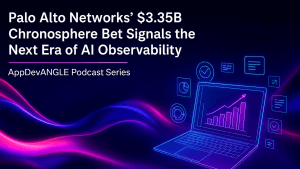Palo Alto Networks’ move to acquire Chronosphere for $3.35 billion is one of the clearest signals yet that observability and security are converging into a single AI-driven control plane. In this special edition of AppDevANGLE, I sat down with my colleague Bob Laliberte, Principal Analyst for Networking and Observability at theCUBE Research, to unpack what this deal really means for customers, competitors, and the future of AI-native infrastructure.
A Bold Move Toward Unified Telemetry and Security
The deal is not simply about adding scale or expanding product surface. It marks a transition toward a unified AI operations stack where real-time telemetry feeds threat detection, autonomous investigation, and agent-driven remediation.
“This just isn’t about scale,” I told Bob. “It’s about powering the AI era of resiliency with real-time telemetry, autonomous investigation, and agent-driven remediation.”
Chronosphere arrives with deep strengths: OpenTelemetry alignment, high-density data handling, and cost-efficient telemetry pipelines designed for cloud-native and AI-native applications. Palo Alto brings petabyte-scale threat analytics, global reach, and a proven platformization playbook.
“We’re seeing the same pattern we saw with Cisco and Splunk,” Bob said. “Tie networking, security, and observability together. It’s the only way to manage these massively distributed environments.”
The AI Infrastructure Shift Driving Consolidation
Our discussion turned quickly to the structural changes happening across AI infrastructure. GPU resources are now distributed across regional, multi-site clusters as organizations confront power constraints, sovereignty requirements, and latency demands.
“When you start talking about scale across, not just scale out, telemetry becomes essential,” Bob explained. “You need the visibility to ensure resilience and optimize systems that cost tens or hundreds of millions to deploy.”
That shift elevates observability from diagnostics to operational survival. AI workloads generate unprecedented volumes of logs, traces, and metrics, and companies need real-time analysis to prevent outages, reduce cost, and maintain service integrity.
Chronosphere was built for this reality. As I shared with Bob, “I used to joke that observability teams were the number one consumers of storage. Chronosphere flipped that by focusing on intelligent ingestion and actionable insights.”
Agentic Operations: Observability as the AI Decision Fabric
One of the most compelling aspects of the acquisition is how it positions observability data as the core substrate for agentic AI.
Chronosphere’s Cortex AgentX framework allows agents to reason over telemetry, identify issues, and propose remediation. Palo Alto Networks has been building its own AI-driven security automation. Combined, they form an integrated environment where performance, security, and compliance signals converge.
“Chronosphere has agentic capabilities Palo Alto will want across their entire platform,” Bob said. “Not just for observability, but for security workflows as well.”
Both of us agreed that while autonomous systems are the future, humans remain essential, especially as domain experts retire. “I want the big green button,” I told him. “Let the system analyze and recommend, and then give me the option to validate.”
Bob agreed: “You need humans in the loop to shape the AI and validate edge cases. That’s how you get from 80% accuracy to 95%.”
The 21× ARR Valuation: Ambitious and High-Pressure
Chronosphere reportedly crossed $160 million ARR earlier this year, with triple-digit growth. Even so, the acquisition’s estimated 21× ARR multiple raises questions about integration expectations and long-term return.
“Twenty-one times ARR is a lot,” Bob noted. “There’s pressure on Palo Alto now. Customers will want to see integration quickly and cleanly.”
Integration quality will define whether Palo Alto can reduce customer tool sprawl—something enterprises desperately want. Our AppDevANGLE research shows:
- Most organizations use 6–15 observability tools
- Over half want to consolidate into unified views
“No one wants one more tool,” Bob said. “They want fewer tools and more consistent experiences. If Palo Alto delivers that, this acquisition becomes very compelling.”
Competitive Pressure: The Platformization Race Accelerates
Vendors across observability and security will feel this move immediately.
Datadog, Dynatrace, Elastic, and other observability platforms now face a competitor with deep security context and agentic automation. Security-centric vendors without full observability stacks may need to partner or acquire.
“We’re absolutely seeing platformization take over,” Bob said. “This is no longer about dashboards—it’s about shared data and shared intelligence that spans security, networking, and operations.”
And while Palo Alto has some networking capabilities already, the acquisition raises new questions about whether additional steps—perhaps even another buy—are ahead.
“It makes you wonder,” Bob added. “Do they go after a bigger networking play next? It wouldn’t surprise me.”
Why This Deal Matters for Practitioners
For developers, SREs, and platform teams, the significance of the announcement goes beyond market noise.
AI systems demand real-time context. Distributed GPU clusters require continuous visibility. Resilience requires autonomous remediation backed by trusted data. And security requires tight integration with operational telemetry.
“The data is the lifeline of the business,” I said in our conversation. “If it’s not accessible or trustworthy, the entire operation is at risk.”
Chronosphere’s architecture, paired with Palo Alto’s security footprint, creates a potential path toward streamlined, AI-native operations—one built on consistent policy, consistent data, and consistent agent-driven action.
What Comes Next
Palo Alto must now prove it can deliver a unified platform experience. Customers will watch closely for shared dashboards, integrated agent workflows, and demonstrable reductions in MTTR and operational overhead.
For Chronosphere, it validates years of engineering discipline. For Palo Alto, it’s a strategic bet that security and observability belong on the same AI-driven backbone. For the industry, it marks a shift toward a future where telemetry, security, and agents form a single operational fabric.



